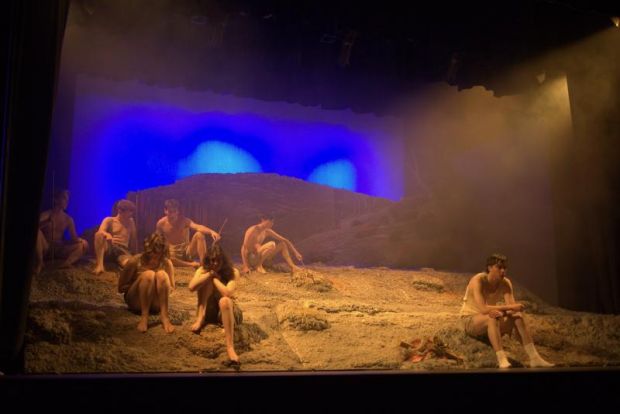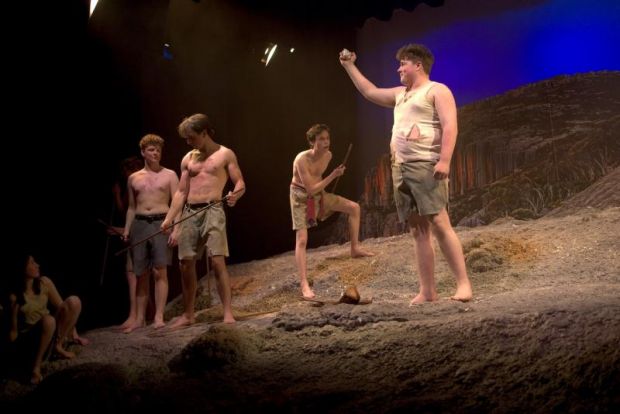Lord of the Flies
Once I had marvelled at the set and properties, I willingly suspended disbelief, relinquishing all to the roller coaster of the action. Even those with the most hardened preconceptions of William Golding’s novel could not fail to be gratified in this production.
A novel remains a classic because it continues to have something to say to contemporary audiences. Unfortunately, Lord of the Flies still resonates. Eleven (plus) school boys are castaway on a deserted island somewhere (in Tasmania?) within a larger theatre of war. The weak and the outsider are vilified and dehumanised. The rule of law is subverted and overthrown by a paranoid and psychotic autocrat. Fear drives a sense of tribalism that threatens the whole society. It is scarily familiar.

All of this is driven by exceptionally well-drawn characters. Piggy is played with charm and innocence by James McGregor. Unable to adequately express what he knows to be true, Piggy demonstrates integrity, heroism and reason. McGregor is an ideal incarnation of this character with a perfect accent in the right social register. There is humour and warmth in this character that contributes to the emotional impact of the climax.
Tommy Howard exhibits significant range in the role of Ralph. Howard has the ability to be a playful and convincing as a youth whose transforms through several realisations to depict horrific pain and abandonment by the conclusion of the action. McGregor and Howard drive the play by making the audience entirely invested in their cause.
The antagonists are equally good. In further inspired casting, Jospeh Mione takes the role of the psychotic, Jack. Mione is an excellent comedian known for roles in Musical Theatre such as Gomez Addams and Lord Farquaad. As Jack, Mione is truly terrifying. He is repellent as the entitled head prefect of a choir school, repugnant as a bully and revolting as the tribal killer. He physicalises the role with great skill.

Bryce Tollard-Williams gives a Roger who is patently unhinged upon first meeting, yet the character still has room to develop into a callous henchman, delighting in cruelty.
Sophie Henderson (also known for musical comedy) gives a moving portrayal of Simon. Other stand outs (in what is a truly wonderful ensemble) are Stella Wesseldine (Sam), Hamish Chilcott (Henry) and Lachlan Ramsay (Maurice). Every well-defined character is strongly portrayed and Ben Armitage’s thoughtful direction of this young cast shows.
The actors move around the stage in creative ways. Built over three raked levels, the set depicts different regions of the island. Though cramped, the space is used very well and the shifting allegiances and perspectives are supported visually. The set cleverly conceals two fire pits. Smoke and vivid lighting are essential effects. The art work is stunning, beautiful and confronting. The “beast” is shown from a close and distant perspective. The pig is realistic enough to convince. Audio effects contribute to the overall ambience, a reminder of the isolation of the group.

The screw is turned tighter over each of the three acts. Whilst there are many moments of humour, and the rubato effect of private conversations in the ennui of tropical heat, the vector towards the climax is never in doubt. The ending is shocking even when you know it is coming.
Anne Blythe-Cooper
Photographer: Wayne Wagg
Subscribe to our E-Newsletter, buy our latest print edition or find a Performing Arts book at Book Nook.

